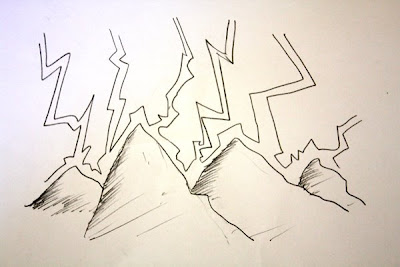The way of associating random image/word would be relating a characteristic of something random with another thing which does not have any or only small concern with it. An example has been given in the class which the colours of the traffic lights are used to indicate the level of danger of smoking.
When we are running out of ideas, this method can be used to reignite reactive thinking. We can actually look at things/environment around us and start thinking to relate two random things together.
This is one of the other ways of associating random things
“I am seeking a way to reduce discomfort for passengers on trains.
With a group of passengers, we look out of the window and see a school.
Associations from school are learning, bullying, exams, playtime.
Ideas include teaching the rail company how uncomfortable the seats are, taking a firm stance in this, giving marks for different trains and seats and having games on trains so passengers do not notice the uncomfortable seats.
How it works
Random Words works in particular by making you go elsewhere for ideas, and hence pushes you out of your current thinking rut. It uses the principle of forced association to make you think in new ways and create very different ideas. “
Quoted from http://creatingminds.org/tools/random_words.htm
Here are some funny images that I like to share with viewers which involve some random situations and their solution.
 FISH TRYING TO GET FOOD. HOW?
FISH TRYING TO GET FOOD. HOW?

'Here is a big problem. Your job is to divide it into smaller problems and blame it on other people.'
Both picture are taken from http://www.cartoonstock.com/directory/p/problem_solving.asp
All in all, I would like to conclude actually associating random images requires association of random words as well to attack a problem from a different direction to normal. Last but not least I would like to show another 2 situations of associating random image/word which then leads to bridging ideas based on stimulus.
"Quick example 1:
Using the random word "Balloon" in the context of new ideas about cars.A bridging idea could be that you inflate the balloon under the car.
The advantages of this would be that the car jack would not puncture rusty cars and that cars could be raised on soft ground.
The resulting final idea could be to have a car jack which spreads its force more evenly under the car and onto the ground.
Quick example 2:
Using a random word of "Spacecraft" in the context of new ideas about kitchens.A bridging idea would be to consider what would happen if the kitchen was in space and what would happen because of gravity.
The resulting idea could lead to the fact that you would need to stop the pans from floating off the cooker/hob.
This could lead to using magnets to hold the pans on (back on the earth's surface). This would stop small children from accidentally pulling the hot pans onto themselves. Or how about using a magnetic field to heat the pan?"
Quoted from http://www.brainstorming.co.uk/tutorials/randomwordtutorial.html .
THANKS FOR READING.









 This really makes me laugh and the words that are stated in the image are totally apposing each other. Same goes with the one below!
This really makes me laugh and the words that are stated in the image are totally apposing each other. Same goes with the one below!
 I guess that is all for now and shall continue with another post showing my version of juxtaposition which has been done in the class!
I guess that is all for now and shall continue with another post showing my version of juxtaposition which has been done in the class!